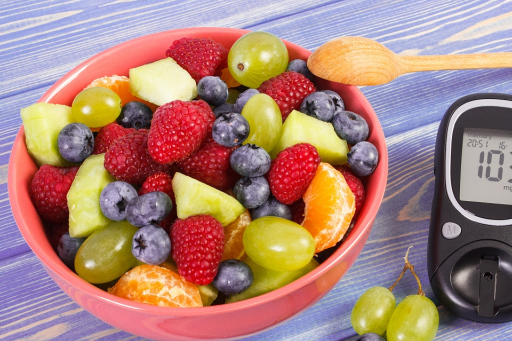In the sweltering summer, the most delightful things to enjoy are definitely air conditioning, watermelon, and Wi-Fi. Eating chilled watermelon is both sweet and thirst-quenching. Having a couple of slices makes the summer heat disappear. Watermelon is not only hydrating but also rich in vitamin C, fructose, lycopene, and other nutrients, contributing to sun protection, skin whitening, and moisturizing effects. While watching others devour sweet and juicy watermelon, people with diabetes may resist due to fear of its sweetness and high sugar content, which is a big no for diabetics, making them only able to admire from afar.
Truth be told, those with diabetes need not resist the temptation, as watermelon is not a forbidden fruit for them. With the right methods and conditions, individuals with diabetes can confidently indulge in it.
Due to its sweet taste, watermelon is often perceived as high in sugar content. However, watermelon contains only 4.2% sugar per 100 grams, with 90% being water. This sugar content is much lower compared to bananas, apples, grapes, and other fruits. In reality, watermelon is not a high-sugar fruit; rather, it is considered a low-calorie fruit.
Many diabetics avoid consuming sweet fruits fearing blood sugar spikes. It is important to correct the misconception that all sweet foods lead to elevated blood sugar levels. Some fruits may taste sweet but have low sugar content, and moderate consumption for diabetics is generally acceptable.
Watermelon is classified as a low glycemic index food. As long as blood sugar is well controlled, diabetic individuals can consume 200 grams of watermelon between meals without any issue. However, consuming a large amount at once can cause blood sugar fluctuations, which is detrimental to the condition.
Diabetics can safely enjoy watermelon by adhering to the following principles:
1. Consume when blood sugar is stable to prevent significant blood sugar fluctuations.
2. Choose the right time to eat watermelon, preferably between meals and not before or after meals. Consuming watermelon around nine to ten in the morning or three to four in the afternoon is ideal.
3. Control the portion size to around 200 grams. After eating watermelon, reduce the intake of staple foods and ensure the total daily calorie consumption is within limits. Monitoring blood sugar after consuming watermelon helps in managing the intake effectively.
4. It’s fine for diabetics to eat watermelon but avoid fresh watermelon juice as it lacks fiber and can be ingested easily without chewing, leading to overconsumption, which is not favorable for the condition.
5. When eating watermelon, include the white part between the rind and the flesh as it has lower sugar content compared to the flesh closer to the rind, helping control blood sugar levels and cooling the body in hot weather.
6. Choose the right variety of watermelon, avoiding specially bred sweet varieties with higher sugar content. For instance, “Black Beauty” watermelon can contain sugars ranging from 12% to 14%, making it unsuitable for diabetics.
7. Consuming excessive watermelon in a short period can lead to a sudden spike in blood sugar levels. To avoid this, cut watermelon into small pieces and eat it in multiple servings to prevent rapid blood sugar elevation.
If diabetics are still unsure about their blood sugar levels after consuming watermelon, they can monitor their blood sugar half an hour to an hour after consumption. As long as blood sugar remains within the acceptable range, the amount and timing of consumption are suitable, allowing individuals to adjust accordingly in the future based on their condition.
Note: The images used are sourced from the internet.


